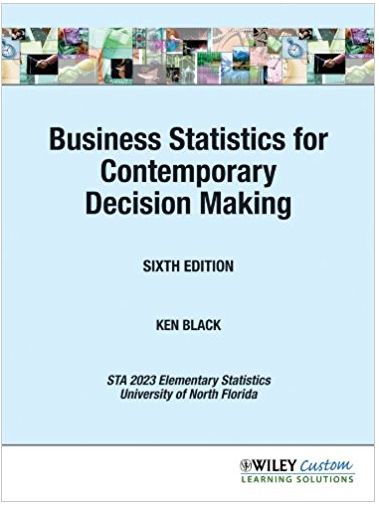Question
1. Classify variables as nominal, ordinal, interval, and ratio. 2. Explain how to create stratified, cluster, and systematic samples. 3. Select the best measure of
1. Classify variables as nominal, ordinal, interval, and ratio. 2. Explain how to create stratified, cluster, and systematic samples. 3. Select the best measure of center for sets of data. What should you use for qualitative data? Why? What should you use for skewed data with outliers? Why? 4. Compare sets of data given standard deviations. What does a standard deviation tell you about a set of data? 5. Use the z-score formula. (Write down this formula!) 6. Given sets of data, determine/explain if they are approximately normal or not. 7. Find percentages/probabilities using the normal curve (empirical rule or normalcdf in calculator). 8. Select the appropriate formula for finding a z-score for means and proportions using the central limit theorem and the standard error. 9. Determine the mean and the standard error using the central limit theorem. 10. Identify the conditions for using the central limit theorem for means and proportions. 11. Determine the necessary sample size given the margin of error. 12. Determine a critical z-value or t-value from a chart. (Have the charts available). 13. Explain the meaning of a margin of error. 14. How does the level of confidence impact the size of a confidence interval? 15. Identify the correct formula for finding confidence intervals for means and proportions. 16. Calculate the correct formula for finding confidence intervals for means and proportions.
Step by Step Solution
There are 3 Steps involved in it
Step: 1

Get Instant Access to Expert-Tailored Solutions
See step-by-step solutions with expert insights and AI powered tools for academic success
Step: 2

Step: 3

Ace Your Homework with AI
Get the answers you need in no time with our AI-driven, step-by-step assistance
Get Started


